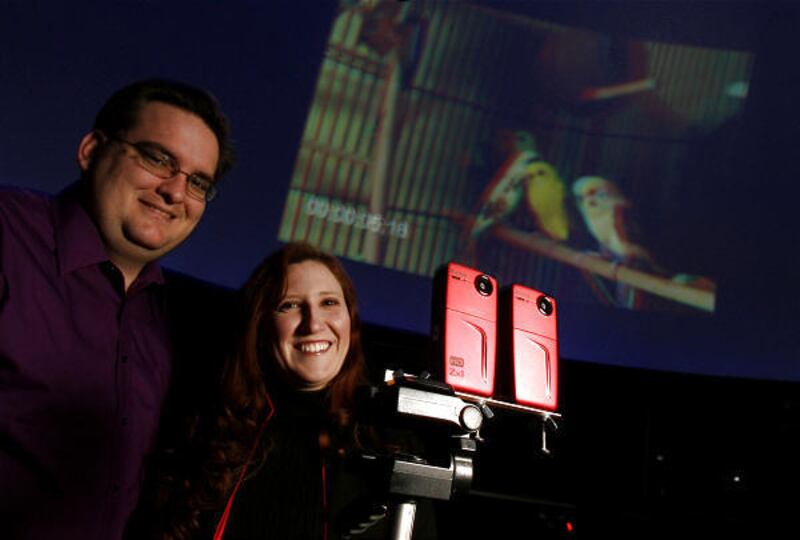OGDEN — Ron Proctor's foray into 3-D videography began when he and his wife, AmyJo, decided to find an affordable but decent quality video camera to capture the exploits of their 2-year-old son, Rigel.
They found a little red Kodak model that was both high-definition and affordable — so much so that they decided to get two. And when you have a pair of something, it doesn't take long to wonder what else you can do with them.
That's how Proctor, who's a production coordinator at Weber State University's Ott Planetarium, a graduate student and a science visualization artist for the university's Scientific Analysis and Visualization Initiative, came to invent his own version of a 3-D video recorder.
It's a timely pursuit, with the rising popularity of 3-D entertainment options. Think "Avatar" or "Up!" or even that one funky episode of the TV series "Chuck." 3-D is hot and Proctor wanted to see how complicated it would be to do it himself.
"Simpler and cheaper than I would have thought," has been his conclusion. While it's "nothing that hasn't been done before with regular cameras," there's something really appealing about a do-it-yourself tool that goes for less than $250 — far from the $20,000 or more were you to go the commercial product route. And the quality's not bad, either.
He started by putting the cameras on a table, then with his eyes wide open he did the "Cyclops trick," getting closer and closer until the apertures turned into one in his field of vision. When he built his camera "holder," he used that distance between them. In this case, it was 6.5 cm, which it turns out is about the average distance between human eyes.
With 3-D, the distance between the cameras matters, because it's different shooting in a regular room compared with shooting mountains far, far away. In that case, you might mount your cameras a good distance apart, say even 2 meters.
It's a principle that's used in astronomy, which is one of his passions. (He met his wife working at the planetarium, and son Rigel's name comes from a star in the constellation Orion.) As the Earth goes around the sun, there's a big difference between summer and winter positions in space. If you take a photo of the sky and then wait six months and take a photo from the same spot, which is actually as far away from the initial position as you can be, you can see a little parallax in the nearby stars that can be used to measure distance.
To film 3-D, Proctor ran both cameras in full color and then used video editing software (there are even free versions available) to remove the red from the right channel and the blue and green from the left. The color removal choice is dictated by the red-and-blue 3-D glasses, which are the cheapest option, and which lens has which color. You can also, though, run the two videos through software that takes advantage of other 3-D options, like polarization.
His 3-D gear — OK, it's really the two cameras, a piece of L-shaped aluminum, a pair of washers, a pair of wingnuts, a couple of screws and a tripod — has been featured on several blogs and Web sites.
Proctor is quick to point out that he's not selling the units; anyone can make their own. This summer, though, his toy will become an official research tool on a university research mission. When Weber State launches its high-altitude balloon, the 3-D technology will be used to take photos from 100,000 feet, he said.
The creation's been getting some Web notice, on blogs and tech sites. Laptopdrv.net calls it "the really simple solution" for folks wanting to make 3-D video inexpensively.
Notes Softpedia in its gadgets section, "This is definitely not too elegant but is surely a simple solution to obtain 3-D videos. As for quality, I have absolutely nothing to complain about the video…"
e-mail: lois@desnews.com


